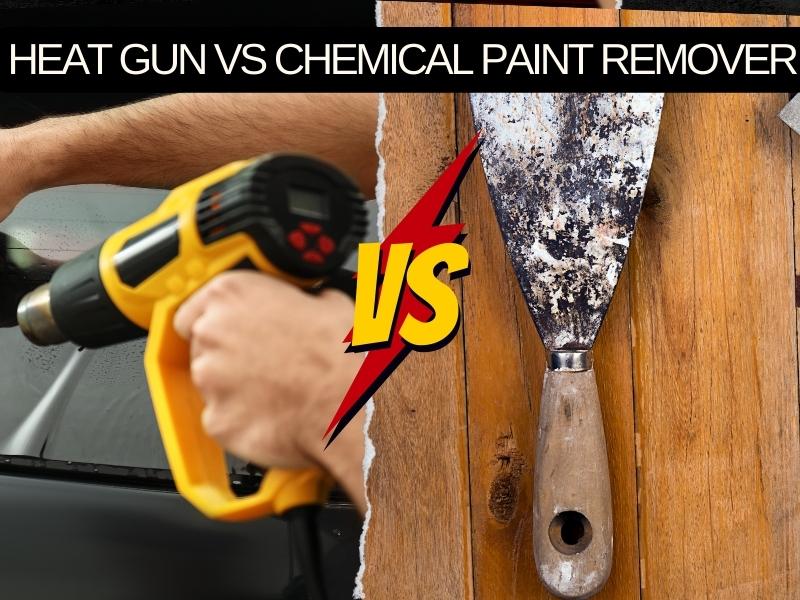When it comes to removing the paint from your home, you have a few different options. You can use a heat gun, or you can use a chemical paint remover. Both of these methods have their own set of pros and cons, so it can be difficult to decide which one is the best option for you. In this blog post, we will discuss the pros and cons of using a Heat Gun VS Chemical Paint Remover to remove paint from your home.
Heat Gun for Paint Removing:
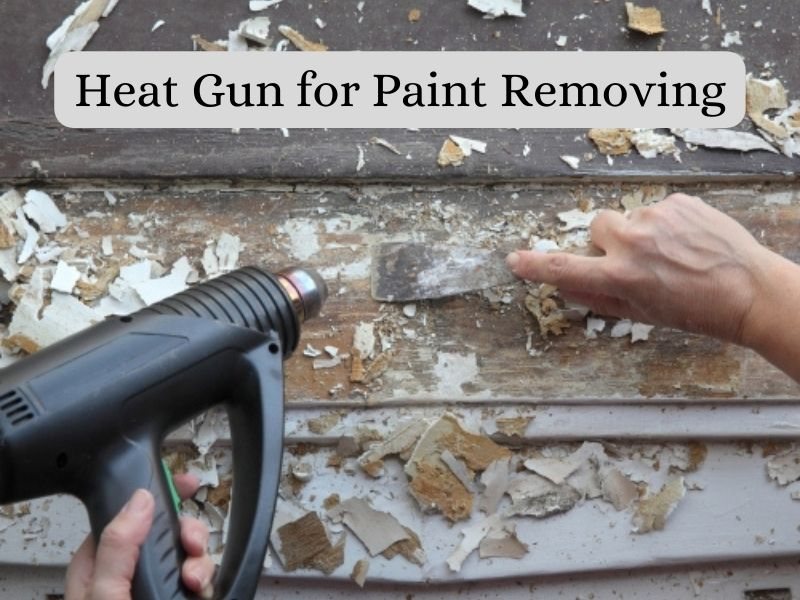
A heat gun is a useful tool for stripping paint from surfaces. It can be used to remove paint from wood, metal, and other materials. Heat guns are available in a variety of sizes and power levels. Choose the right heat gun for the job at hand.
- Small heat guns are ideal for smaller jobs, such as removing paint from door frames or small areas of wood.
- Medium heat guns are better suited for larger jobs, such as stripping paint from a large piece of furniture.
- Large heat guns are best for very large jobs, such as stripping paint from an entire house.
Always use caution when using a heat gun. The gun produces hot air that can reach temperatures of over 1000 degrees Fahrenheit. This hot air can easily cause burns. Always point the gun away from yourself and others when in use.
Chemical Paint Remover for Paint Removal:
Chemical paint removers are another option for removing paint from surfaces. These products work by breaking down the paint molecules, making it easy to wipe away. Chemical paint removers are available in two types,
- Consol: Consol chemical paint removers are ideal for small jobs, such as removing paint from door frames or small areas of wood. Simply spray the product onto the surface and wait for it to work.
- Gel: Gel chemical paint removers are better suited for larger jobs, such as stripping paint from a large piece of furniture. Apply the gel with a brush and let it sit for a few minutes before wiping away.
What is the Difference between a Heat Gun vs Chemical Paint Remover?
A heat gun uses hot air to remove paint, while a chemical paint remover uses chemicals to break down the paint molecules. Both methods are effective at removing paint, but each has its own advantages and disadvantages.
A heat gun is a tool that uses hot air to remove paint from surfaces. Heat guns are often used by professionals to strip paint from woodwork or to remove paint from cars.
A chemical paint remover is a solution that contains chemicals that break down the paint molecules. Chemical paint removers are often used by homeowners to remove paint from walls or cabinets.
Which is better, Heat Gun VS Chemical Paint Remover?
There’s no easy answer when it comes to deciding between using a Heat Gun VS Chemical Paint Remover. Your decision ultimately depends on the specific project you are working on. Each method has its own advantages and disadvantages that you’ll need to consider before making a choice.
If you’re working on a small project with only a few layers of paint, a heat gun may be the best option. Heat guns can be less messy than chemical strippers, and they’re also less likely to damage the surface underneath the paint. However, heat guns can be more difficult to control, so they’re not always the best choice for larger projects.
Chemical paint strippers can be more effective on larger projects since they can strip away multiple layers of paint at once. But they’re also more likely to damage the surface underneath the paint, so you’ll need to be careful when using them. In general, chemical strippers are best reserved for projects that involve removing multiple layers of paint.
Pros of Heat Gun:
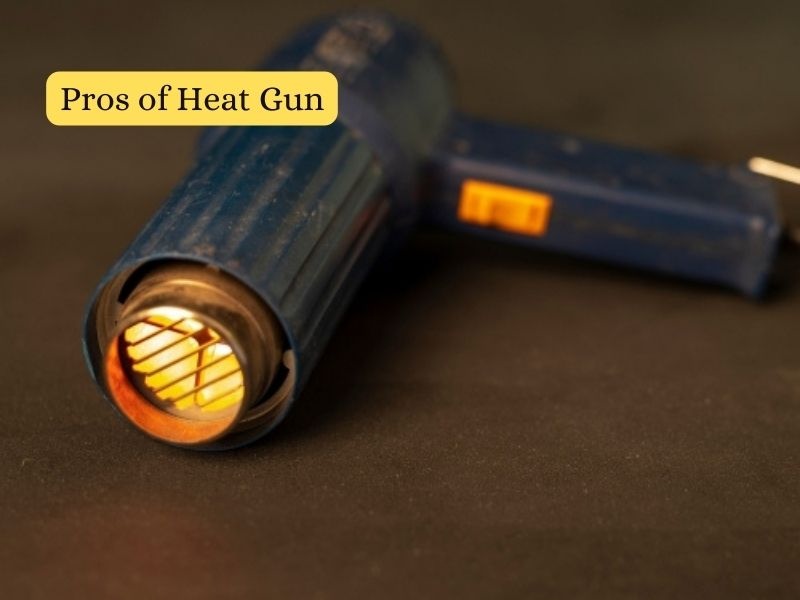
- Heat guns are less likely to cause respiratory problems than chemical paint removers.
- They produce very little odor compared to many chemical strippers.
- They are a great choice for those who want to avoid using harsh chemicals.
Cons of Heat Gun:
- The heat gun can potentially damage the surface beneath the paint if it’s not used correctly.
- Heat guns can be dangerous to use if you’re not careful, as they can easily cause burns.
- They can be more expensive than some chemical paint removers.
Pros of Chemical Paint Remover:
- Chemical paint strippers are effective at removing multiple layers of paint in a single application. This can be a significant time saver when stripping multiple layers of paint from a surface.
- Paint removers with chemicals typically tolerate a wider range of temperatures than heat guns. This means that they can be used in a wider variety of environments and on a wider variety of materials.
- Chemical paint removers are typically less expensive than heat guns.
Cons of Chemical Paint Remover:
- One of the biggest disadvantages is that chemical paint removers can be very toxic and dangerous to both people and the environment. If not used properly, they can cause serious health problems.
- In addition, fumes from chemical paint removers can be incredibly dangerous and should always be used in a well-ventilated area.
How can you use a Heat Gun for Removing Paint?
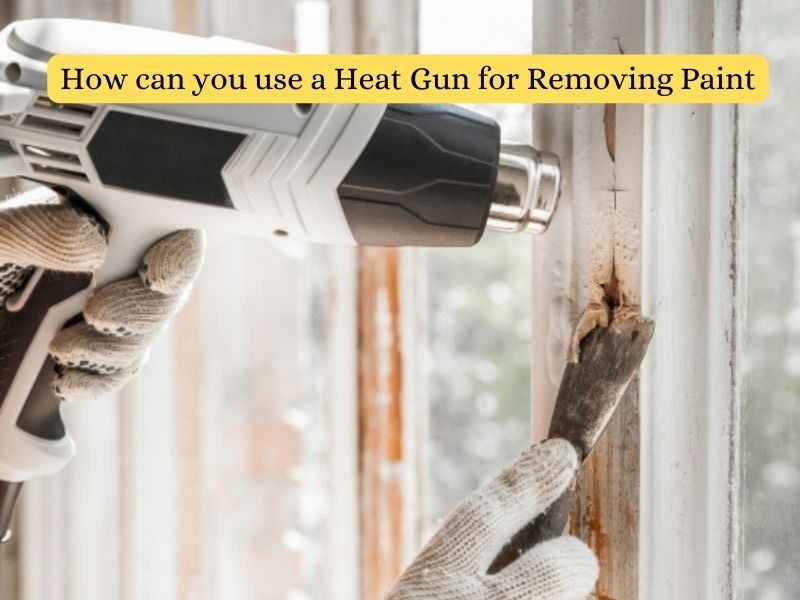
A heat gun can remove paint from surfaces in a matter of minutes, without the use of harsh chemicals. This makes them ideal for projects where you need to remove paint quickly and efficiently. Follow these steps to safely and effectively remove paint from a surface using a heat gun.
- Put on protective gear: Wear gloves, goggles, and a respirator to protect yourself from the heat and fumes generated by the heat gun.
- Set up your work area: Have a drop cloth or old sheet on hand to catch any paint chips that come off during the process.
- Preheat the heat gun: Hold it about 6 inches away from the surface of the paint you want to remove, and wait until the gun is heated up to its optimal temperature.
- Start stripping the paint: Slowly move the heat gun back and forth over the area of paint you want to remove. The paint will start to blister and peel away from the surface.
- Scrape off the paint: Once the paint has been heated and loosened, use a paint scraper or putty knife to remove it from the surface.
- Clean up your work area: Dispose of any paint chips and debris properly, and vacuum up any dust that has been generated during the process.
- Allow the surface to cool: Once you have removed all of the paint, turn off the heat gun and allow the surface to cool completely before proceeding with any further work.
How can you use a Chemical Paint Remover for Removing Paint?
If you’re looking for a way to remove paint from a surface, chemical paint removers are an option worth considering. These products work by breaking down the bonds between paint and the surface it’s adhered to, making it easier to scrape or sand off the paint.
Before using any type of chemical paint remover, it’s important to read the product label carefully and take any necessary safety precautions. Once you’ve done that, here’s a simple guide to using these products:
- Testing: Begin by testing the paint remover on a small, hidden area of the surface to be sure it won’t damage or discolor the material.
- Apply the chemical: Apply the paint remover to the surface using a brush, roller, or sprayer.
- Allow the chemical to work: Allow the remover to work according to the manufacturer’s instructions. This usually involves waiting for a specific amount of time before attempting to remove the paint.
- Scrape off the paint: Use a putty knife, scraper, or sandpaper to remove the loosened paint.
- Clean the area: Wipe away any residual paint remover with a clean, damp cloth.
- Allow the surface to dry: Rinse the area with clean water and allow it to dry completely before painting or applying a new finish.
Most common problems with paint removal:
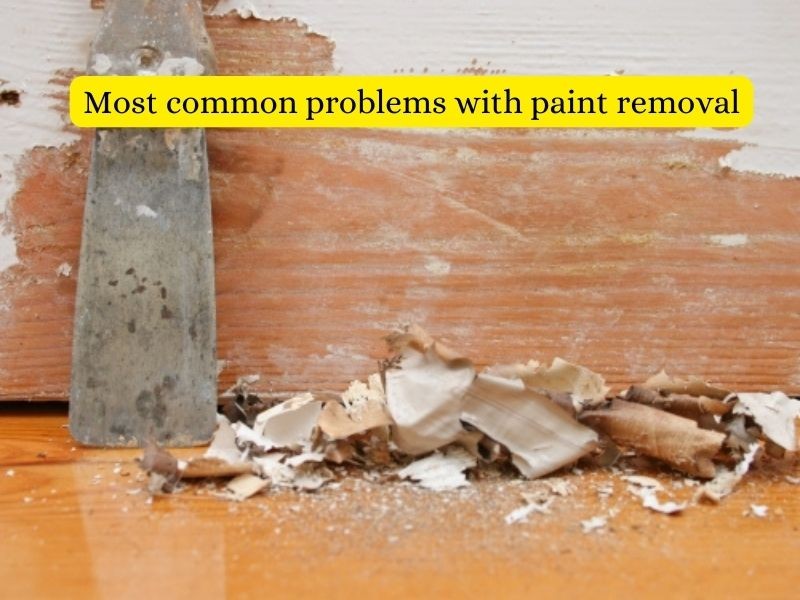
Some of the most common problems with paint removal include:
- Inadequate paint removal: This can leave behind a chalky residue that can be difficult to remove.
- Over scrubbing: This can damage the underlying surface, making it more difficult to remove the paint.
- Use of harsh chemicals: Some paint removal products contain harsh chemicals that can damage the surface or cause irritation.
- Damage to the surface: Paint removal can damage the surface, making it more difficult to paint over.
- Time Consuming and Messy: One of the most common problems with paint removal is that it can be very messy and time-consuming, particularly if the paint is thick or if multiple layers need to be removed.
- Harmful to your health: Another common problem with paint removal is that it can be dangerous. Paint fumes can be harmful to your health, so it is important to make sure that you are wearing proper ventilation when you are working with paint removers. If you are not careful, you may also end up inhaling paint fumes. These fumes can be extremely harmful to your lungs and can cause serious health problems.
FAQs:
Q: What are some of the most common paint removal methods?
A: There are a few different ways to remove paint, and the most common methods include
Scraping: Scraping is usually the first step in removing paint, and it involves using a putty knife or other sharp tool to scrape off the top layer of paint.
Sanding: Sanding is another popular method for removing paint, and it involves using sandpaper to sand down the top layer of paint.
Chemical Stripper: Chemical strippers are also effective at removing paint, and they work by breaking down the chemical bonds that hold the paint to the surface.
Q: How can I avoid damaging the surface beneath the paint?
A: To avoid damaging the surface beneath the paint, take the following precautions:
- Use a drop cloth or other protective covering over the surface.
- Tape off areas that you don’t want to paint.
- Use a primer if you’re painting over a dark color.
Use a paintbrush or roller specifically designed for use with latex paint.
Q: Do I need both a heat gun and chemical paint remover for removing paint?
A: There is no need to use both a heat gun and chemical paint remover. If you are using a heat gun, it will be sufficient to remove the paint. Chemical paint removers can be quite harsh on surfaces, so it is best to avoid using them if possible. If you must use a chemical paint remover, be sure to test it on a small area first to ensure that it will not damage the surface.
Q: What are the safety precautions while using chemical paint remover?
A: The following are some safety precautions to take while using chemical paint remover:
- Use chemical paint removers in a well-ventilated area.
- Wear gloves, protective clothing, and eye protection when using chemical paint removers.
- Follow the manufacturer’s instructions carefully when using chemical paint removers.
- Never mix different types or brands of chemical paint removers together.
- Dispose of all containers and rags used to apply chemical paint removers in a safe manner.
- Never use chemical paint removers near an open flame or while smoking.
- Keep children and pets away from areas where chemical paint removers are being used.
